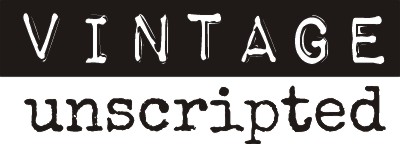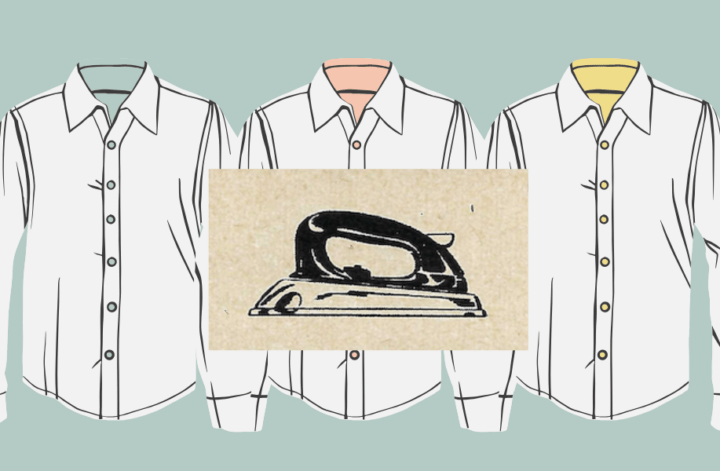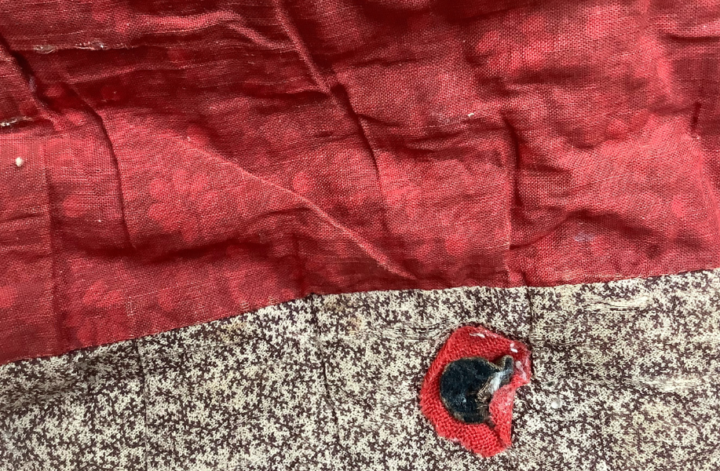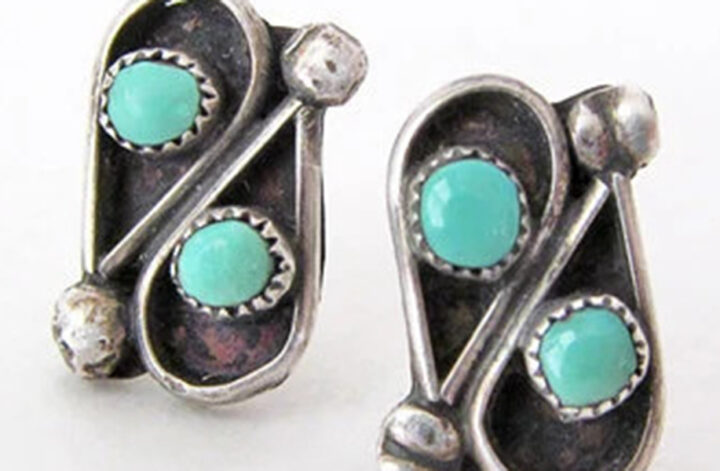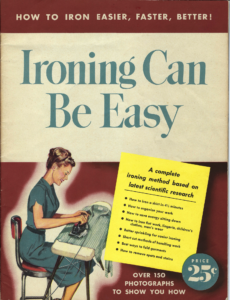
Reading vintage housekeeping booklets is educational and enthralling. Keeping house is an art and a science, and we owe a debt of gratitude to the home economists who gave their brainpower and sweat to help mostly women back then do their job more efficiently. The 1948 booklet, Ironing Can Be Easy, from the Proctor Electric Co. has a ton of step-by-step directions for setting up your ironing station (sitting while you iron is most efficient), sprinkling different types of garments in preparation for ironing and actually ironing different linens and garments. What follows is how to iron a dress shirt, a process detailed in 32 steps.
When I was learning the Marie Kondo method of folding clothes, I watched online videos repeatedly until I was somewhat competent. A homemaker in 1948 did not have that option. The Proctor Electric Co. did have a film though, starring TV personalities Jinx Falkenburg and Tex McCrary, and expert Mary Proctor. They would send a representative to screen the film for women’s groups. But women who couldn’t see the film could rely on this booklet, with instructions for how to handle each step with photos and detailed captions. Instructions for how to iron a dress shirt from the booklet follow.
A couple of editorial decisions were made in composing this post. The title was changed from “How to Iron Men’s Shirts (also men’s and boys’ pajama tops • sport shirts • boys’ and girls’ blouses • women’s blouses)” to “How to Iron A Dress Shirt” because Mother Google frowns upon on a post title one million letters long. And, the actual instructions were laid out for readers horizontally across two pages, which makes it easier to follow if you can have the booklet open next to your ironing board, but it would be miserable on a computer screen or phone. Through the then unimagined technology of cutting and pasting on a screen instead of with rubber cement and an x-acto knife (as would have been done then), we present…
How to Iron a Dress Shirt
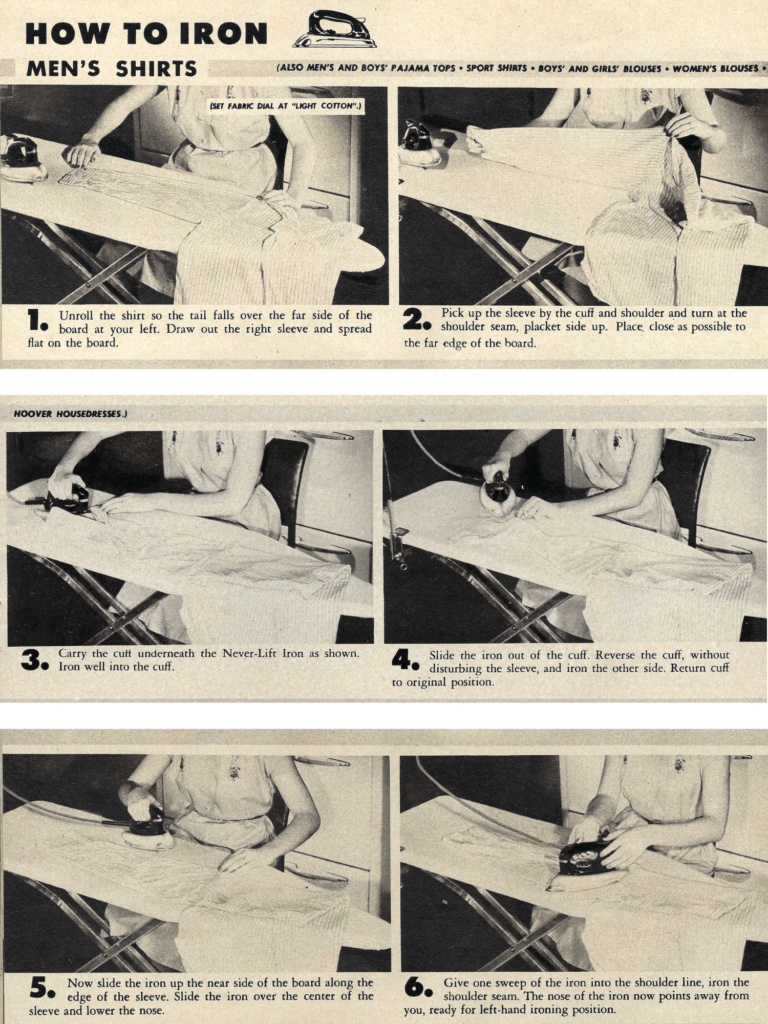
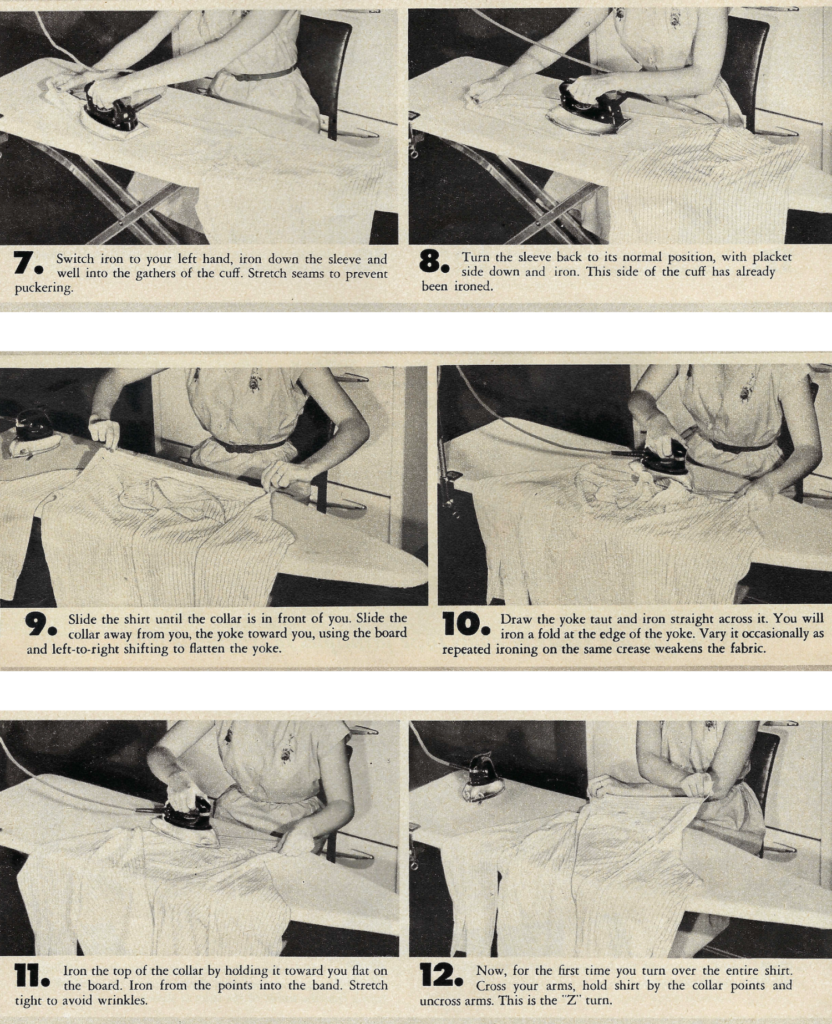
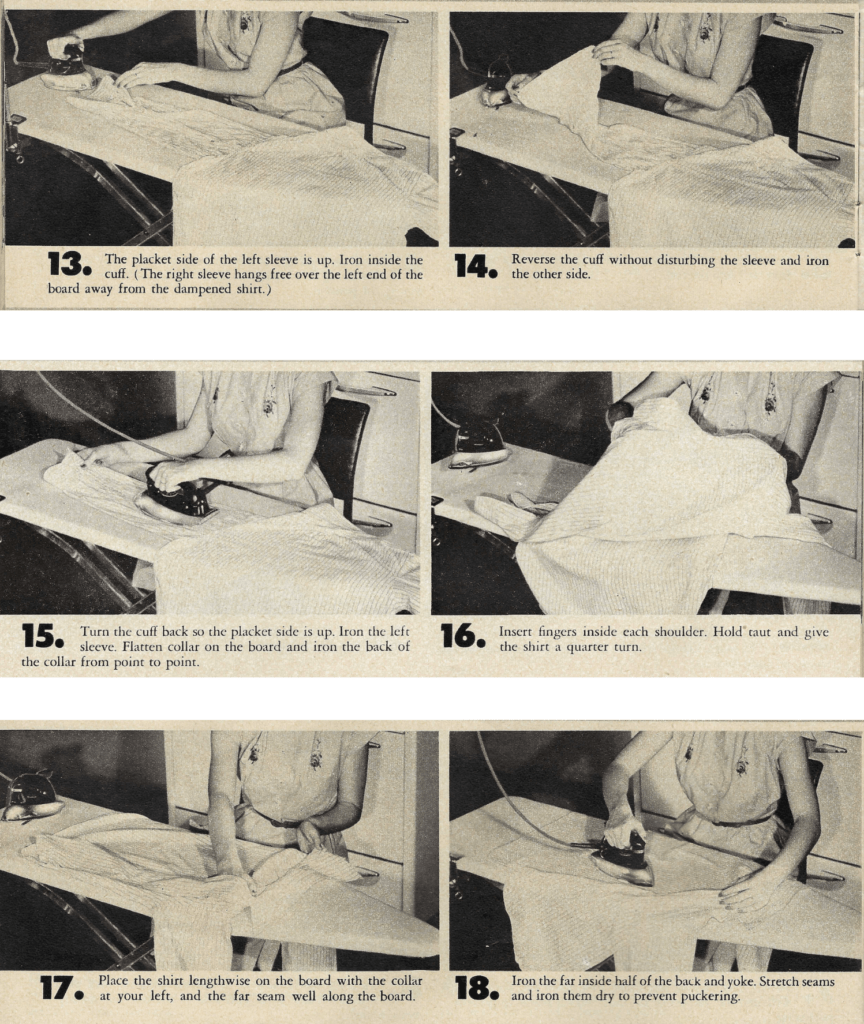
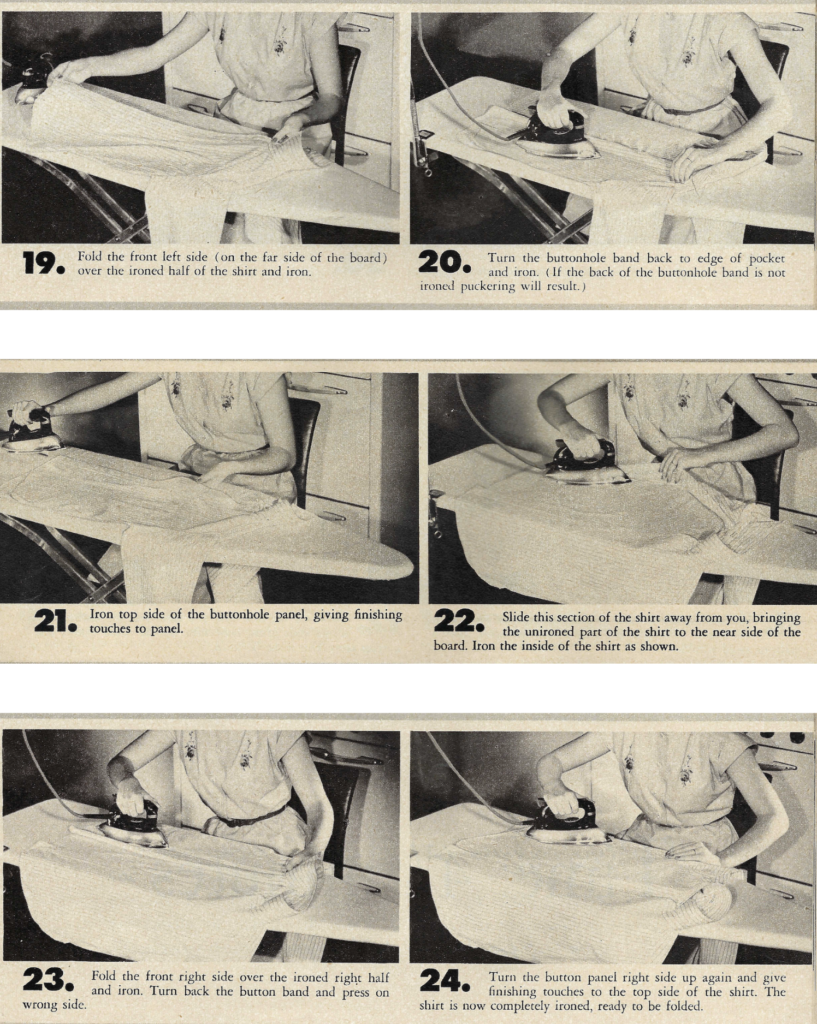
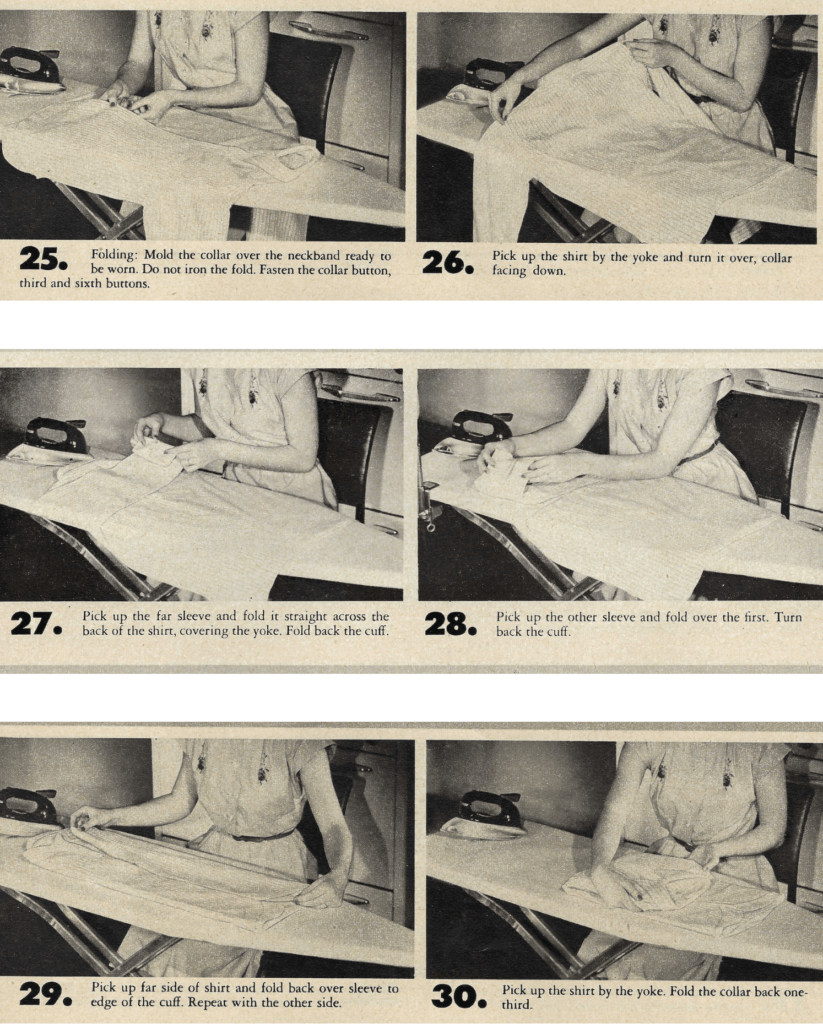
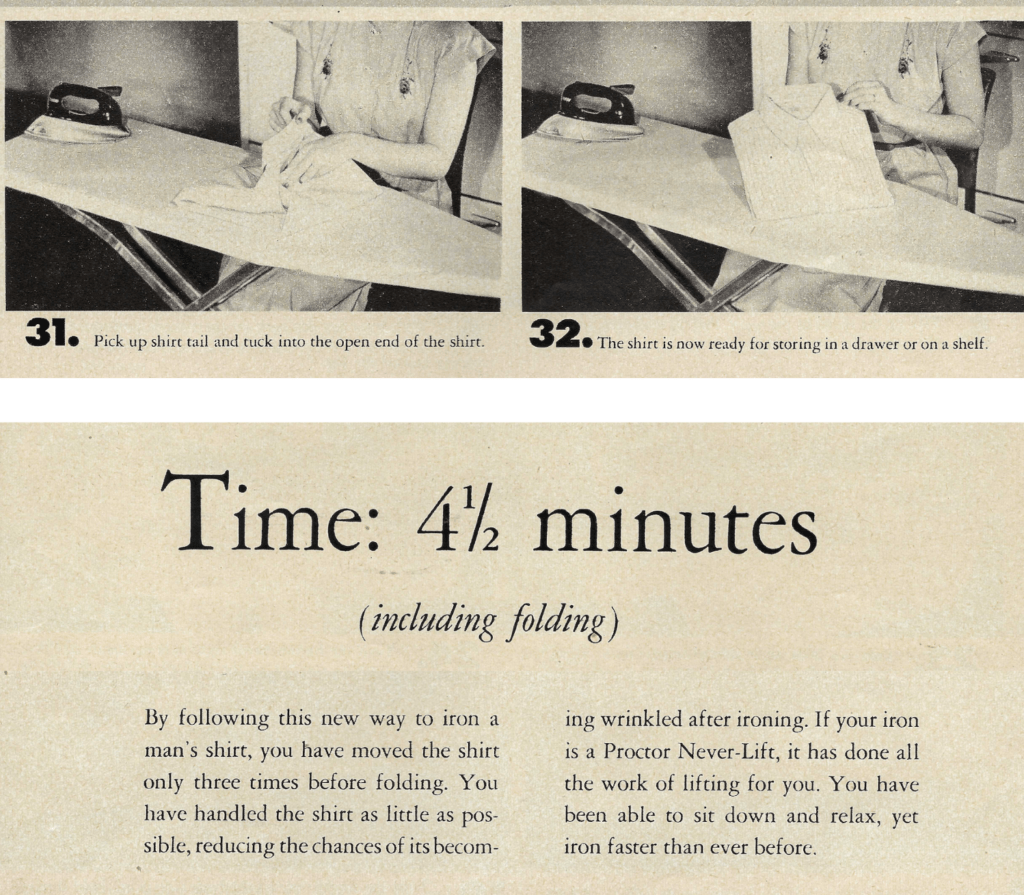
Ironing Can Be Easy was written based on studies and methods developed at the New York State College of Home Economics at Cornell University and also ironing methodology studies by the Home Economics Staff of Washington State College. The level of detail in spelling out how to iron a shirt efficiently, while sitting, is exquisite. Can’t you imagine a homemaker opening the booklet (that cost her 25¢) and following the procedure step by step to learn how to iron a dress shirt efficiently? I can see myself doing it now. It’s interesting you start with the sleeves, that is always what I iron last.
The folding steps, #25-31, are the best part. They are somewhat similar to the Marie Kondo method, however it’s awesome how the tail tucks into the folded shirt to keep the shirt folded in the drawer. Everything about the process is about keeping the shirt crisp. But why was a dress shirt folded at all? Aren’t most shirts hung in the closet?
Thinking about it, closets in average homes were smaller back then. Walk in closets existed only for movie stars and mansion dwellers. Your average closet had room for hanging suits and dresses, but not enough room to hang shirts. So yes, dress shirts were likely folded and put in the dresser drawer.
This is the second post from Ironing Can Be Easy, the first post lays out a brief history of ironing, how to sprinkle clothes and the benefits of sitting while ironing.

